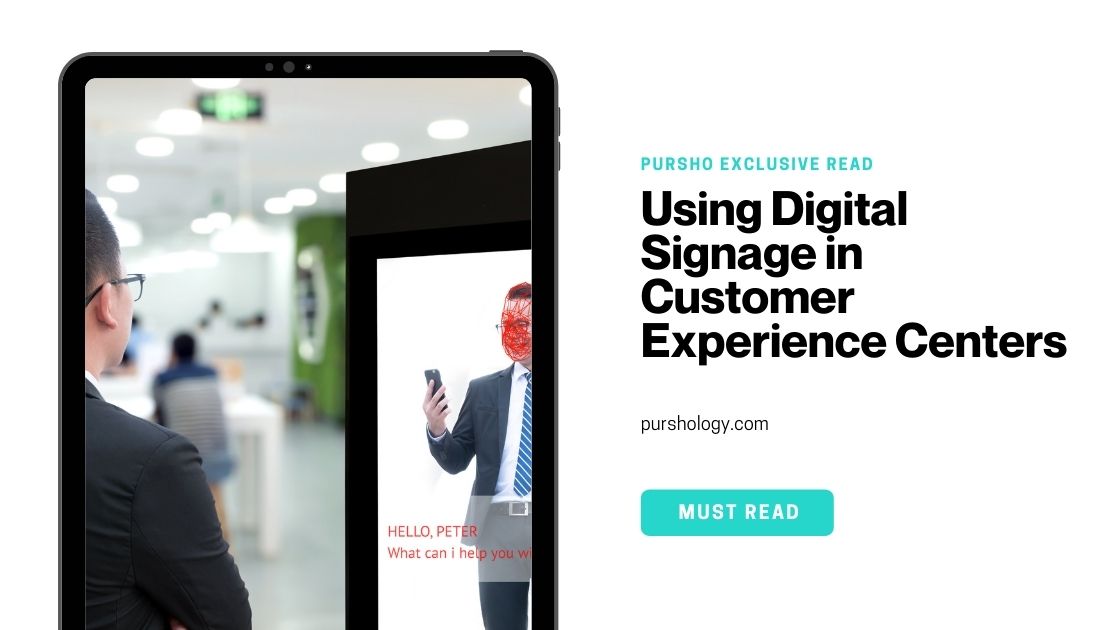You’ve seen digital signages, so you know what they are. They are in your favorite boutique, displaying gorgeous models smiling enticingly in their fabulous OOTDs. They are on the highways, showing lavish interiors, the latest smartphone, the newest master-planned community, and a government minister with a message to the people.
Yes, digital signages are popular advertising tools. But there’s more to digital signages than that. Your digital signage experts, say your digital signage Dubai solutions architect, should be able to help you put together innovative audio-video solutions using digital signages and specialized software.
One of the most exciting ways you can use digital signages is by setting up experience centers.
What Are Experience Centers?
An experience center is precisely what you think it is. It is a place where people go to experience, engage or interact with something.
Technically, experience centers can cover a whole range of industries and applications, and one can “produce” an experience using many approaches.
For instance, a museum or a collector can put up a dynamic, experiential exhibit instead of the typical static art exhibit using screen projectors. Case in point: the Van Gogh Exhibition, which toured the whole world to provide an engrossing spectacle that immersed the audience into Van Gogh’s artworks.
A marine life information center or even a theme park can create a virtual sea world adventure experience center. A room filled wall-to-wall with digital screens could let visitors experience what it is like to be underwater, interacting with all sorts of sea creatures. A digital underwater experience like this should be more economical to maintain than actual aquariums.
Even if you prefer aquariums with real fish and sea creatures, digital signage technology can still have a role. A gigantic aquarium’s exterior walls could be transparent digital screens that display a particular sea creature’s information when someone “clicks” on it on the responsive display.
However, when people say experience centers, they are most likely referring to customer experience centers.
Customer Experience Centers
Even if people are moving more and more to digital sales channels, brick-and-mortar stores will always have their place. One ingenious way businesses use their physical retail spaces is by transforming them from mere sales spaces to customer experience centers.
Companies put up customer experience centers to encourage customer engagement with their brand, products, or service offerings. A paint company, for instance, can create virtual spaces where clients can use textured concrete paint to design bespoke interiors. This can empower customers to make a purchase.
The top mobile phone brands should come to mind when you think of customer experience centers. They often have their stores set up so that customers may freely “experience” their latest gadgets.
Customer Experience Center Characteristics
The following are some of the characteristics of customer experience centers.
1. They are meant to wow.
In a customer experience center, customers expect to be surprised and fascinated by what they will see and experience. You know your customer experience center is a success if people talk about it, tell their friends about it, and remember it long after they leave.
2. They are meant to be interactive.
Customers don’t want to be talked to at customer experience centers. They expect to interact with the space and affect outcomes through their decisions. In other words, they want to click, swipe, and do, and they anticipate feedback, a response, and a reaction in return.
3. They are supposed to tell a story.
Customer experience centers are also branding centers because they surround customers with the company’s story and seamlessly communicate the company’s message.
4. They are meant to take customers on a journey.
They are experience centers because they are supposed to let the users see and feel (also hear, taste, and smell, if applicable). They don’t tell but show.
How Digital Signages Can Take Customers on a Journey: An Example
Suppose a technology company offers frictionless customer encounters to the aviation industry. This tech company can set up a customer experience center to walk buyers (airports, airline companies, and other aviation industry players) through their frictionless system.
The buyers’ representatives will take the role of “passengers” on their way to board an imaginary flight. The customer experience center, set up like an airport, will mimic the traveler’s journey from the airport curb to the boarding gate.
At the curb will be check-in kiosks where passengers check themselves in and process passenger identification through facial recognition.
Inside the airport, there will be departure screens that scan a passenger’s face, recognize him, and show him his flight information. The departure screen will highlight his departure time, his boarding gate, and the flight’s current progress (checking in, delayed, boarding, etc.).
Then on set intervals, there will be way-finder screens to automatically scan a passenger’s face then pull up a map showing him where he is and the way to reach his “departure gate.”
Then there will be security checkpoints on gates, private lounges, and other private and secure areas. Travelers can go in and out of these areas, according to their level of authorization, using only facial recognition technology.
Then, at the boarding or departure gate, there will be no need for personnel to manually check people’s boarding credentials, tickets, boarding passes, and identification. Departure gate screens, using facial recognition technology, will confirm the identity of boarding passengers and their homeland security and other pertinent permits.
The Case for Customer Experience Centers
Why create customer experience centers? Because customer experience centers sell.
Just take the case of the company in the above example. Without a customer experience center, the company will probably use brochures for marketing its products and service offerings. The brochures will talk about the company’s strengths and list down the cutting-edge technologies used. They will also convey the benefits of using the company’s services.
There’s nothing wrong with such brochures, and you should have them ready even if you have a customer experience center. But such collateral should reinforce, not replace, the experience.
A customer experience center is the most effective way you can tell your customers what you are offering. You don’t have to say you offer a “frictionless experience” because your customers can experience it for themselves. You don’t have to tell your customers how awfully convenient it would be to use your technology. By experiencing it first hand, they’d be able to tell right away.
Customer Experience Centers: Up Your Sales Game
You’ve heard the clichéd expression, “Experience is the best teacher.” As it turns out, experience is also the best seller.
Businesses are now using it to market their brand, products, and services. Customer experience centers are now taking over traditional sales spaces and, instead of telling customers what they can expect, they invite customers in to experience it themselves.




